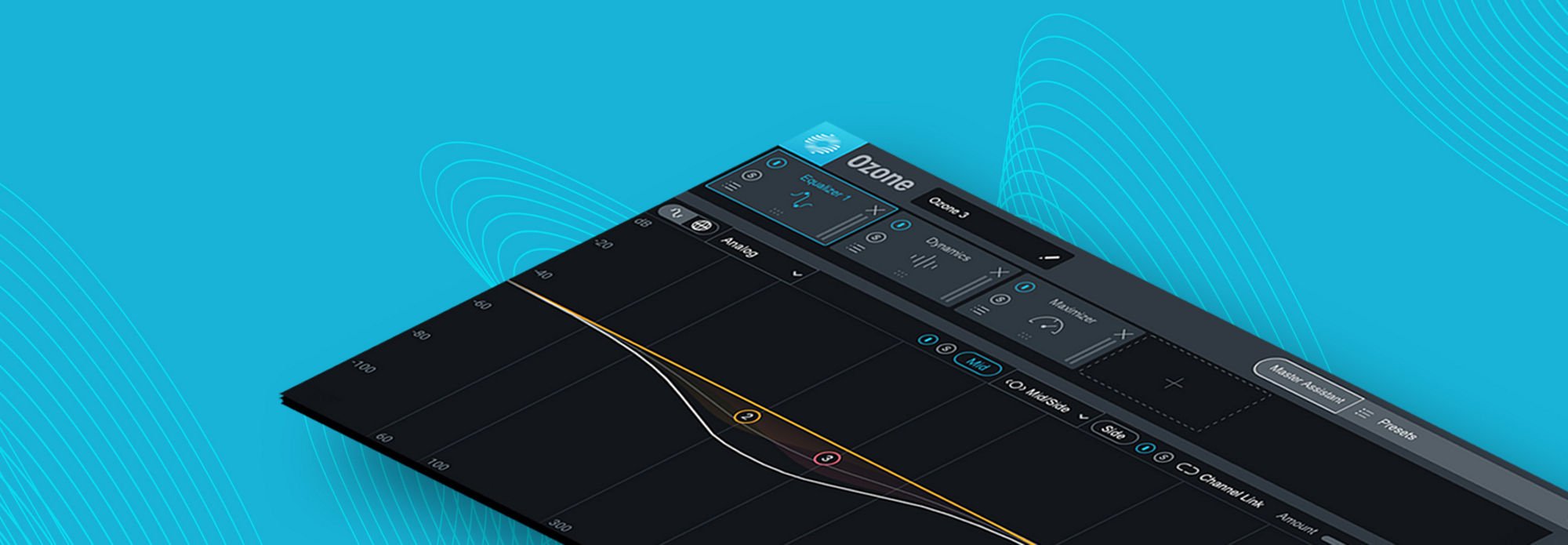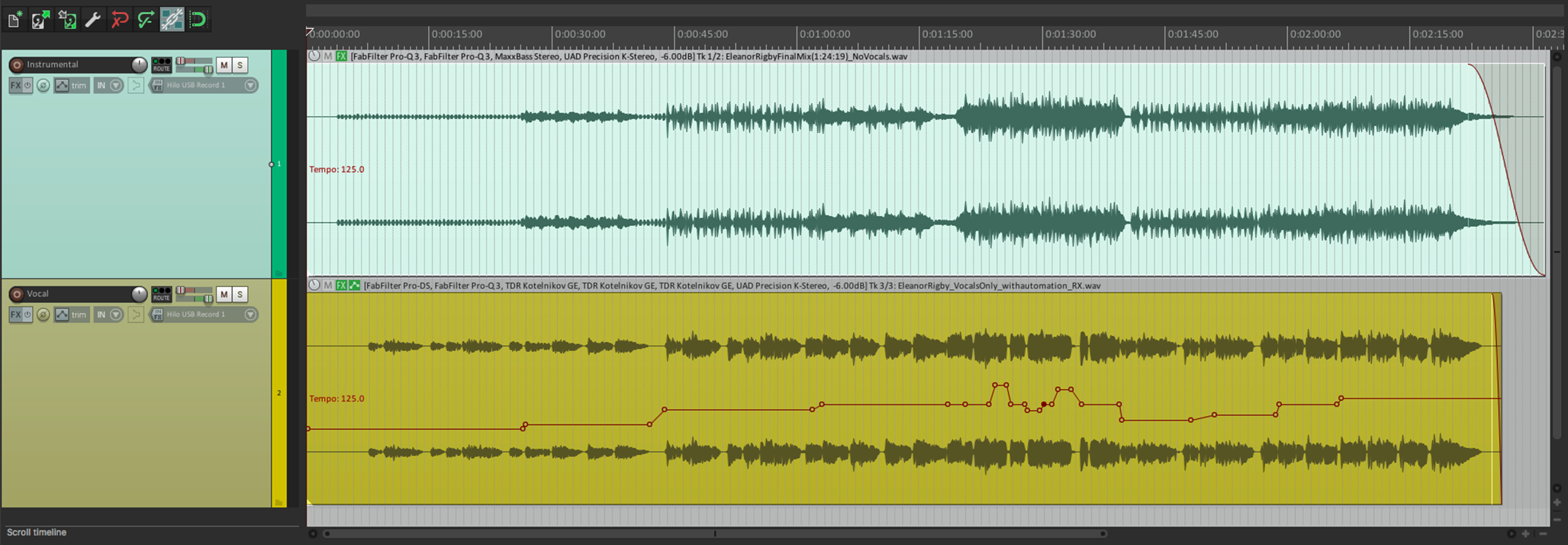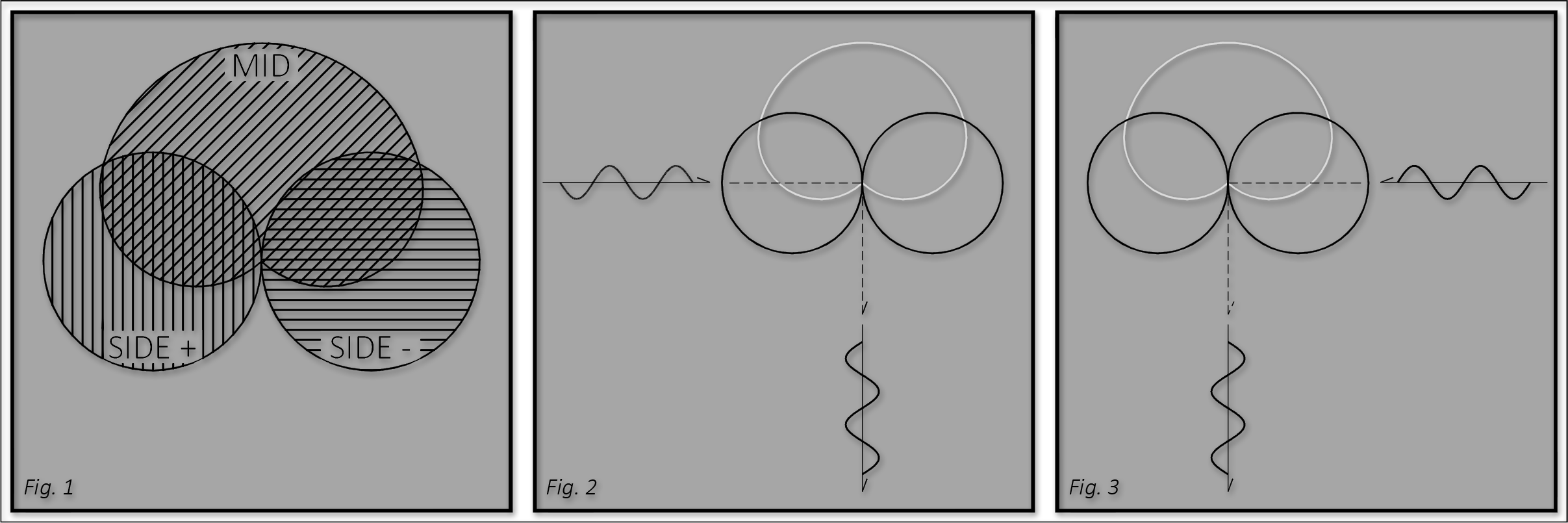Ok, so metering might not be the sexiest topic in the world, but despite that (or perhaps because of it), I still see and hear questions all the time along the lines of, "what level on such and such a meter should I be aiming for?" or, "how does this meter relate to that meter?" Ian Shepherd (an excellent mastering engineer and all around good chap) has already created what I consider to be an exemplary post and video over on his Production Advice website, but even after referencing that I still see a lot of confusion in forums and Facebook groups over the differences between a handful of contemporary metering techniques. Since everyone learns a little differently, I thought I would offer my take on the matter. So, here we go.
Let's kick things off with a brief discussion of the meters we'll be examining, as well as brief descriptions of what they show us:
Peak Meters: While there are a few varieties of peak meters (Type II and I Peak Program or Quasi-Peak, Sample Peak, and True Peak), they all basically aim to show you the same thing: the highest instantaneous level of recorded sound. In the order listed above, they do this with increasing accuracy.
RMS Meters: The problem with peak meters is that the way in which we humans perceive loudness has very little to do with peak levels and much more to do with average levels. RMS is short for "Root Mean Square", which is a snazzy way of saying "average" in audio terms. I'll dig into some of the specifics below in case you're interested.
VU Meters: VU (or Volume Unit) metering is the oldest method and shows something very close to average levels. While there are a few pitfalls to be aware of, it is still an incredibly effective metering method once you become accustomed to it.
Dorrough Meters: Patented in 1985, the Dorrough Meter was the first contemporary "loudness" meter capable of showing both average and peak levels simultaneously.
TT Dynamic Range Meter: In many ways the TT Meter takes its cues from the Dorrough meters. It shows both average and peak levels simultaneously (although I believe it uses a different time constant to calculate the average level), and gives an additional metric of "Dynamic Range". In engineering terms this is referred to as "crest factor", and is the difference between the peak and average levels. Also, in this context "time constant" just means "the time over which the average is calculated", and can be thought of somewhat like a smoothing amount.
EBU R128, ITU-R BS.1770-3, ATSC A/85 Meters: The new generation of loudness meters focuses on measuring loudness as closely to how we humans perceive it as possible, while also measuring true peak values. This involves not only measuring average level (which again uses a different time constant), but also taking into account the fact that we perceive some frequencies as louder than others when played at the same power level.
I don't think peak meters warrant too much further discussion, suffice it to say they have their place and are useful to ensure you don't clip any of your channels or busses. As mentioned earlier, a meter that shows "true peak" values will be the most accurate. I put true peak in quotation marks because these meters achieve their readings by oversampling the signal which, while more accurate than a simple sample-peak meter, still has a margin for error. That said, it's sufficiently small that by leaving a little headroom you can ignore it.
RMS meters, on the other hand, can be the source of much confusion (at least to the uninitiated), and it all starts with the name. When you first learn what RMS actually stands for, you're likely to think "well that's great and all, but can I get a translation of the translation?" So, let's break it down a little. Root. Mean. Square. Hmmm... What this is actually trying to tell us is that the value resulting from an RMS measurement is the square root of the mathematical mean of the original range of values squared. Go ahead, read it again if you need, I'll wait. OK, well the mean part makes sense as that's the most common way to measure an average, but what's with all the square-ing and subsequent root-ing? The key here is that audio signals contain both positive and negative values, usually in roughly equal amounts. Take a sine wave for example. If you calculated it's mean value you would come out with zero, and yet our ears tell us that can't be correct. This is where the squaring comes in. Any negative number squared is equal to it's complementary positive number squared. For example 2 x 2 = 4 and -2 x -2 = 4. Thus, by square-ing all the values you can convert the negative portions to positive ones and find a more meaningful mean (hardy-har-har). Then, to counteract all the square-ing you've done, you take the square root. Fine. Good. Now, how long of a time do you take your average over? If in the digital realm, do you overlap measurement windows or not? It would not be unreasonable to suggest that a 50 ms window would be sufficient, as that is the time it takes for one cycle at 20 Hz to complete, however this will lead to a meter with very rapid ballistics. (In meter-speak, ballistics means the characteristic movement of the indicator, whether that be a needle, LEDs, or GUI element). However, to the best of my knowledge and research ability there is no well defined time constant (also called integration time) for RMS measurements of audio. Thus, while all RMS meters should give the same readings for a steady state sine wave, they may read quite differently from one another for program material. It is also worth mentioning that there is a convention in audio metering whereby the RMS level of a sine wave is set equal to it's peak level. In the strictest technical and mathematical sense this is wrong, but from a perception standpoint it makes sense, so we've stuck with it.
In contrast to an RMS meter, a VU meter is very precisely defined in it's timing characteristics but leaves a bit more leeway when it comes to level calibration. A VU meter is fundamentally a physical device (although there are some very good digital emulations) which shows something close to average level, and has a 300ms integration time. A traditional analog VU meter is designed so that it reads "0" when fed a specific RMS voltage, traditionally +4 dBu, however this can be calibrated to fit within the ideal working range of the system the meter is part of. In the digital world, while there is no strict standard, the analog voltage that corresponds to 0 VU is often set to either -20 or -18 dBFS. Thus, a sine tone with an RMS value of -18 (or -20) dBFS, would read 0 on a VU meter when fed through a properly calibrated DAC. The difficulty (for some) with a VU meter is that it responds much more strongly to low frequencies than higher ones. This is true of most meters, but because the top ~50% of the meter represents only 6 dB while the bottom ~50% represents 17 dB, this frequency bias becomes even more apparent. While many see this behavior as a problem initially (and I count myself in that group), it can actually be used to one's advantage. A good engineer will learn to use what they're hearing vs. what they're seeing on a VU meter to make judicious decisions about EQ as well as level.
Dorrough meters (and there are more than a few configurations) were born out of a frustration with the inaccuracies of both VU and peak metering. On the one hand, while the VU meter gives you a good idea of what the perceived loudness of your program is likely to be, it tells you nothing about how much of your available headroom you are using. On the other hand, peak meters will warn you when you're running out of headroom, but will tell you next to nothing about the perceived loudness of your program. The Dorrough meter solved this dilemma by displaying both average level (using a 600ms integration time) with solid LED bars, and peak level using a single illuminated LED above that. In addition to average and peak levels, this configuration yielded a third metric: crest factor. While not explicitly stated, this could be gauged by examining the difference between the peak and average levels.
The TT Dynamic Range meter takes this a step further by giving a numeric readout of the crest factor, or as it calls it "dynamic range" (DR). As a bit of a side note, "dynamics" has become a popular term to use when describing a track's crest factor, however from my point of view dynamics in music indicates differences between soft and loud passages, both of which could have their own characteristic crest factor values. Some people skirt this issue by speaking of micro- vs. macro-dynamics, but for my money I'll stick with the well defined technical term: crest factor. Terminology aside, the TT Meter derives it's "DR" measurements by comparing peak and RMS levels. However, while it's documentation does specify that peak measurements are made using oversampled, floating-point calculations (so as to be sensitive to inter-sample overs), it is missing two crucial bits of information: integration times of the RMS and DR measurements. This is why similar meters such as the brainworx bx_meter yield different crest factor measurements. Specifically, my own admittedly un-scientific observations have led me to believe that the bx_meter's "Dynamic" measurement responds more slowly to peaks than does the TT meter's, resulting in lower crest factor values. Is one more "correct" than the other? Hard to say. The TT Meter certainly has a large and dedicated user-base, and seems to more accurately represent the technical definition of crest factor. However, while the bx_meter appears to show something closer to "short-RMS to longer-RMS ratio" and has a rather odd decay ballistic characteristic for the lower end of it's crest factor measurement, it's lower readings may encourage more "dynamic" mixes and it includes a handy feature which the TT Meter does not: weighting curves, specifically the K-Weighting curve.
This brings us to the increasingly common and oft misunderstood LU meter. While there are a handful of different variations (EBU R128, ITU-R BS.1770-3, ATSC A/85, which frankly have more to do with different broadcast standards), they all use the same basic measurement mechanisms, and unlike some of the other meters we've discussed here, they are very well specified. Many compliant meters show 5 metrics: momentary, short-term, and integrated loudness, loudness range, and true peak. In a nutshell, the methods for deriving these measurements are as follows. To arrive at the momentary (M) loudness value, signals are first run through the aforementioned K-weighting filter which rolls off frequencies below 100 Hz and accentuates those above 2 kHz, after which an RMS measurement is taken. The RMS value is calculated using a 400ms window with 75% overlap. This is described in greater detail in ITU-R BS.1770-3. The short-term (S) measurement takes the momentary values and integrates them over a period of 3 seconds, giving smoother, slower meter, while the integrated (I) measurement integrates the values of the M measurement over the entire length of the program, giving a single number metric. These are fully specified in ITU-R BS.1771-1. Loudness range (LRA) is specified in EBU Tech 3342, and while rather sophisticated, is essentially based on the cumulative distribution of loudness values over the measurement period. This means that it effectively displays the difference between the most common quiet and loud values. As another personal aside, I feel that the LRA measurement yields something much closer to what most musicians would call the dynamic range of a piece of music, however the EBU specifically states that LRA measurements "should not be confused with other measures of dynamic range or crest factor."
At this point hopefully you understand the methodologies behind many of the most common meters, and can see why questions like, "What LUFS value corresponds to DR8?" don't have an easy, straightforward answer. All of the meters discussed measure audio in their own slightly different ways, and understanding those differences is key to comprehending what a meter is showing you, and how it does (or doesn't) relate to any other meter.
Feel free to ask any questions you may have in the comments, and I'll do my best to answer them as thoroughly and accurately as possible. 'Till next time,
Ian











